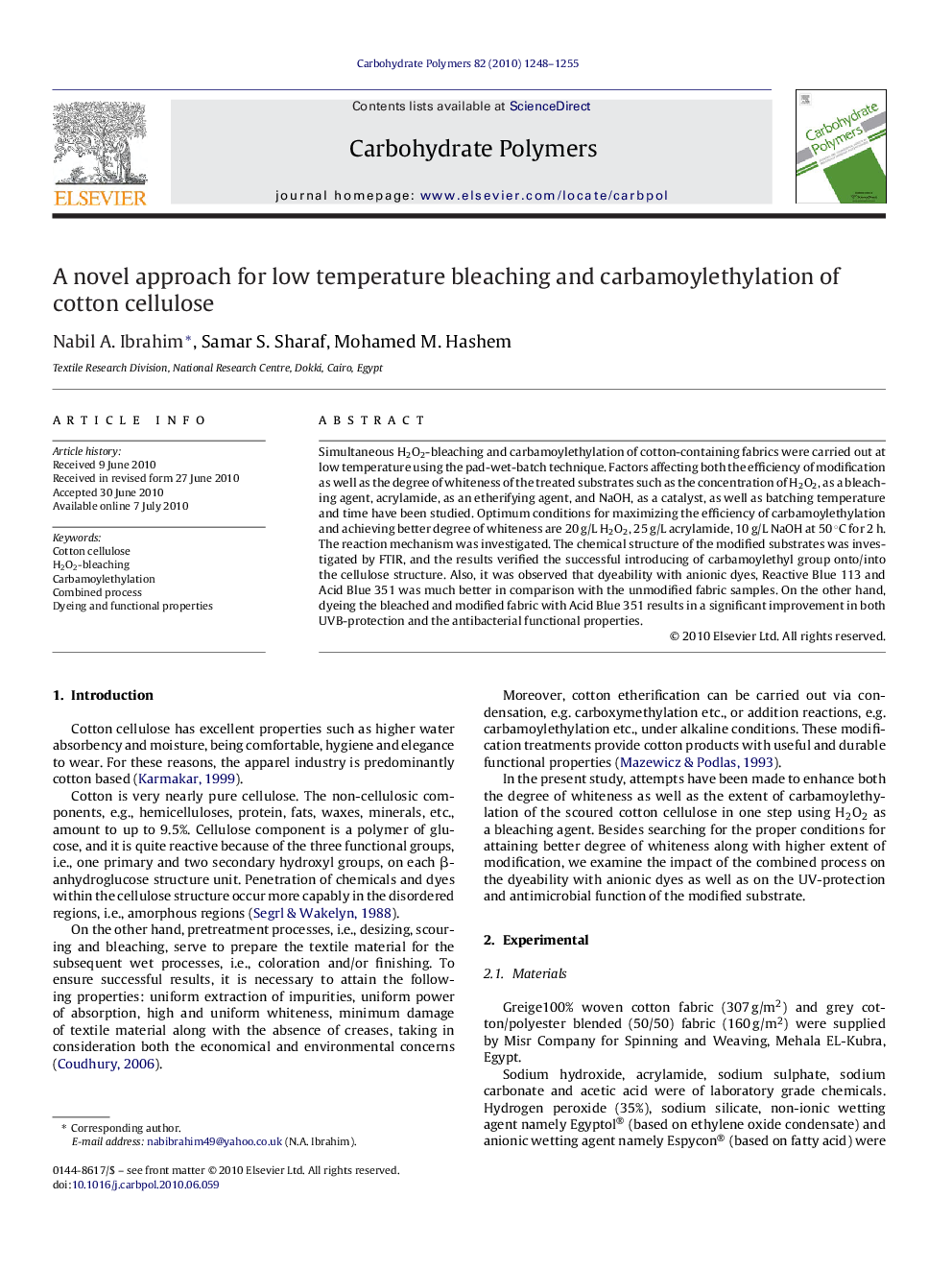| Article ID | Journal | Published Year | Pages | File Type |
|---|---|---|---|---|
| 1383925 | Carbohydrate Polymers | 2010 | 8 Pages |
Simultaneous H2O2-bleaching and carbamoylethylation of cotton-containing fabrics were carried out at low temperature using the pad-wet-batch technique. Factors affecting both the efficiency of modification as well as the degree of whiteness of the treated substrates such as the concentration of H2O2, as a bleaching agent, acrylamide, as an etherifying agent, and NaOH, as a catalyst, as well as batching temperature and time have been studied. Optimum conditions for maximizing the efficiency of carbamoylethylation and achieving better degree of whiteness are 20 g/L H2O2, 25 g/L acrylamide, 10 g/L NaOH at 50 °C for 2 h. The reaction mechanism was investigated. The chemical structure of the modified substrates was investigated by FTIR, and the results verified the successful introducing of carbamoylethyl group onto/into the cellulose structure. Also, it was observed that dyeability with anionic dyes, Reactive Blue 113 and Acid Blue 351 was much better in comparison with the unmodified fabric samples. On the other hand, dyeing the bleached and modified fabric with Acid Blue 351 results in a significant improvement in both UVB-protection and the antibacterial functional properties.
